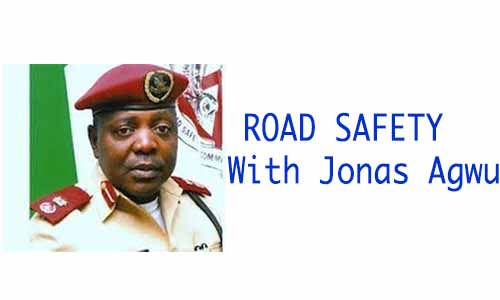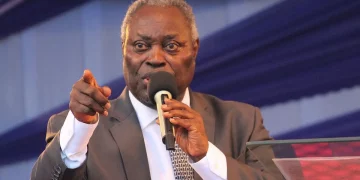Drunken Driver rams into soldiers in Lagos, kills scores’ was the breaking news that jolted me again after the Niger State fatalities. The report said that four soldiers attached to the Myoung Barracks in the Morocco area of Shomolu in Lagos were feared dead, and others were injured after a suspected drunk driver rammed into them.
The soldiers, it noted, were doing their monthly road jogging outside the barracks in the early hours of Friday. The vehicle that hit and killed them had three young men as occupants. The Toyota vehicle was running at full speed before ramming into the soldiers. Four of the soldiers died, and many were seriously injured
The incident reminded me of the sad incident that claimed the life of one of the most enterprising journalists who died while observing his early morning jogging. The details have been well captured but will be revisited when I next focus on the rules of engagement for joggers.
As I write, I must confess that I am too sad to interrogate this sad event. I know the report said the three young men were high on something because it takes someone who is driving under the influence of whatever substance not to sight a group of soldiers who were observing their monthly walk/jogging.
We are not talking about two or three soldiers but a group of soldiers numbering maybe 50 or more. It is strange but funny, although sad that the young men failed to observe simple decency while approaching the military barracks, which I know is often adorned with numerous warning signs that even the blind cannot miss.
Just yesterday, I stumbled on the picture of a very beautiful soldier in uniform and admired her beauty and wished I was still available and searching. Suddenly, I noticed, ‘RIP Rhoda’. It was then it dawned on me that this beautiful Rhoda was one of the victims. Her dreams, aspirations and bright military career cut short by a drunk ‘mufu’ who chose to be irresponsible
I remember I once wrote on the need to obey the 30km/ph recommended by the United Nations (UN) on built up areas. One of my readers sarcastically asked me how that was possible in a country where we treat lives like they don’t matter. I am sure if these young men who in the language of my brother Okey Bakassi don,’gbee’ (drunk), read that piece and mocked me, they would now be sober, which is what alcohol beverage does after the crime.
If you ask me, I will tell you I am at a crossroads in dealing with the two evils of traffic crash involved in the crash that killed the soldiers: excessive speeding and driving under the influence which is prevalent among youths and even adults during festivities and other driving seasons. Since speed was treated earlier, I will dwell on driving under the influence.
I don’t know if you read my piece titled: ‘One For The Road’, where I shared a sad story of a young man who cut his life short just before the 2020 Christmas celebration. The young man, according to a tweet she read, took a bottle too many and dared to drive under the influence of alcohol. He was involved in an avoidable road traffic crash and died. He was the only casualty.
The sad crash and death reminded me of some effort to address the incidence of drinking and driving globally. One of such efforts is an international conference on drink driving. I was privileged to be one of the over 300 participants and discussants at the conference to reduce harmful drinking. It was an initiative of the International Centre for Alcohol Policies, held in Washington DC, in the United States of America (USA).
The Global Action on Harmful Drinking is a collaboration of initiatives dedicated to help reduce the harmful use of alcohol. This initiative reflects the collective commitment made by major international alcohol producers to make a significant effort to address harmful drinking through a combination of global and local actions.
Their emphasis is on low-and middle-income countries such as Nigeria where they are working in collaboration with the Federal Road Safety Corps and other road safety non-governmental organisations (NGOs). These leading producers of beer, wine and spirits took on a new commitment that built on their long-standing effort to reduce harmful drinking.
There were 10 targeted actions in five key areas such as checking under-age drinking, strengthening and expanding marketing codes of practice, providing consumer information and responsible product innovation as well as reducing drink-driving, in addition to enlisting the support of retailers to reduce harmful drinking.
Globally, there are about 1.35 million road traffic deaths yearly and millions of injuries. Although an estimate of crashes caused by drink-driving vary from country to country, one point is clear, it is a leading contributor. I have chosen to discuss these initiatives in view of rising cases of drink-driving even in the face of the FRSC renewed deployment of breathalyzers to check drink-driving.
My focus, however, will be on efforts in reducing under-aged-drinking and drink-driving which is pronounced during festivities such as the coming Easter celebration and weekends in major cities across the country. With respect to reducing under-age drinking, there are concerns over the extent and harmful consequences of underage drinking as expressed by governments from all over the world, including the concern by the World Health Organisation (WHO).
In most countries, there is a minimum age for purchase and or consumption of alcohol, yet drinking by those under the minimum age of 18 is a concern in many parts of the world and can lead to serious public health consequences. Under-age drinking is a societal challenge that is only possible to prevent through expanded cooperation among governments, enforcement agencies, clerics, retailers, parents, educators and others in the community.
The focus is therefore to encourage national governments to set ambitious but realistic and measurable targets to significantly reduce under-aged purchase and consumption of alcohol. In doing so, there should be commitments to actively seek enforcement of government regulations for under-age purchase and consumption in all countries, especially where a minimum purchase and/or consumption age has been set.
In countries where no such limits exist, there is the need to encourage the government to introduce a minimum purchase age and to enforce it. In addition, there is a need to strengthen the work of other interested stakeholders, including NGOs and International Governmental Organisations (IGOs). Developing, promoting and disseminating educational materials and programmes designed to prevent and reduce under-age purchase and consumption among young people or those known to have strong influence over their behaviour is critical.
This strategy will include consulting experts on the development of best practice educational materials for use by parents, schools and community groups and in social media. Recall that Pillar 4 of the UN Decade of Actions on Road Safety (2011-2020) emphasises the need to improve road safety and behaviour of road users and reducing drink-driving.
In the area of reducing drink-driving, there is the need for the government, international agencies, civil society organisations and the private sector to use the plan as a guiding document for their activities. We must acknowledge the preventable contribution that drink-driving makes to road traffic crashes and fatalities which has more impact among the youths as illustrated in the WHO Global Status Report on Road Safety 2009.
The key point to note is that governments should enforce existing drink-driving laws and regulations while advocating the introduction of effective drink-driving laws, including a BAC limit for novice drivers backed by appropriate enforcement.
I am excited by these developments but saddened by the slow pace of our legislation.
As I write, I am not aware of a national legislation restricting the purchase and consumption of alcohol by the under-aged in keeping with best practices. Even where they exist, there is hardly any concrete attempt at enforcement. The exception is the Lagos State Traffic Regulations which takes special exception to driving under the influence but I doubt if it recognises the need to restrict purchase and consumption of alcohol.
I am however elated by the 2012 National Road Traffic Regulations which aptly prescribed the alcohol limit permitted to be 0.5grammes in 100millilitres of alcohol or 80milligrammes in 100millilitres of urine or best test. The same regulations prescribe a fine of N5,000- or six-months’ imprisonment or both against offenders. For me, the efforts of the Corps in 2014 may not yield significant results if other states don’t emulate Lagos State by barring the sale of alcohol and intoxicants at motor parks.





